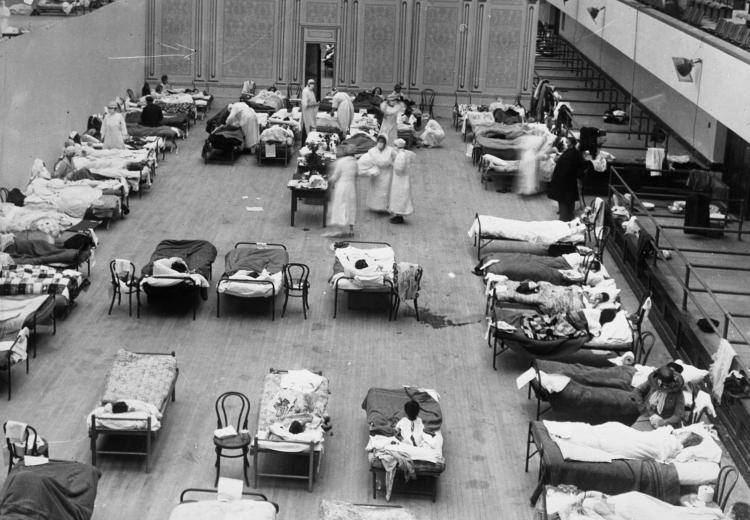Media Resource
BackStory: Forgotten Flu—America and the 1918 Pandemic

Photo caption
The Oakland Municipal Auditorium served as a temporary hospital during the 1918 flu epidemic. Photo by Edward A. "Doc" Rogers.
This episode of BackStory entitled "Forgotten Flu: America and the 1918 Pandemic" takes listeners into the flu pandemic of 1918 that killed nearly 675,000 people in the United States. Consider the essential question: How do the measures taken by health officials in 1918 and 1919 compare to contemporary responses to pandemics? We provide the audio recording, a listening guide, and connections to resources for investigating pandemics in world history.
Audio file
A full transcript of this episode can be found at the BackStory website.
In the Grip of Death (00:00-07:06)
Fighting the Flu (07:07-17:55)
Tomb of the Unknown Nurse (18:00-23:20)
Rest in Peace (23:25-33:05)
Once and Future Flu (33:10-43:40)
Related on EDSITEment
Lesson Plan
The Path of the Black Death
Teacher's Guide
Using Primary Sources in Digital and Live Archives
Teacher's Guide
Chronicling America: History's First Draft
Student Activity
Connecting the Humanities and the Sciences
Lesson Plan
Kennewick Man: Science and Sacred Rights
Media Resource
